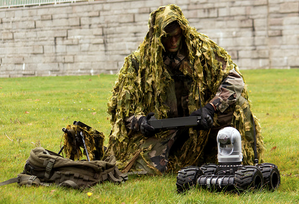
26/3/12 – LaCroix.com (AFP)
Deux soldats britanniques ont été tués lundi dans le sud de l'Afghanistan par un officier de l'armée afghane, ce qui fait passer à 15 depuis le début de l'année le nombre des militaires de l'Otan
tués par un compagnon d'armes afghan.
"Les détails de l'incident ne sont pas encore totalement connus, mais il apparaît qu'un membre de l'armée nationale afghane a ouvert le feu à l'entrée de la base britannique de Lashkar Gah, tuant
les deux soldats britanniques", a déclaré le ministre britannique de la Défense, Philip Hammond.
"L'assaillant a été tué en retour", a-t-il ajouté à Londres devant la chambre des députés.
Selon une source sécuritaire occidentale, un soldat afghan est mort dans l'incident et un autre militaire britannique a été "grièvement blessé".
Abdul Nabi Elham police, le chef de la police du Helmand, ne confirme pas ces autres victimes. Mais d'après les informations dont il dispose, l'assaillant est un lieutenant afghan du nom de Gul
Nazar, originaire de Jalalabad.
"Il n'y a eu aucun différend verbal entre lui et les soldats de l'Otan", affirme-t-il, contredisant les dires d'une source sécuritaire afghane haut placée.
"Dès qu'ils ont ouvert la porte" d'un camp de l'Equipe de reconstruction provinciale (PRT) du Helmand à "son équipe et lui", l'homme "a ouvert le feu" sur les deux Britanniques "et les a tués", a
raconté M. Elham.
"Nous ne connaissons pas le mobile de cette attaque. Nous n'avons pas trouvé de liens entre Gul Nazar et les talibans", a indiqué le policier, ajoutant qu'une enquête était en cours. Les talibans
ont affirmé, via Qari Yousif Ahmadi, un porte-parole, qu'"un homme en contact avec eux avait tué trois soldats de l'Otan dans le Helmand".
C'est le deuxième incident mortel pour l'armée britannique ce mois-ci dans cette province à forte implantation talibane du sud de l'Afghanistan. Le 6 mars, six de ses soldats étaient morts
lorsque leur véhicule avait sauté sur une mine. Les insurgés avaient revendiqué cette action.
Le district de Lashkar Gah, la capitale provinciale du Helmand, est l'un des premiers dont le contrôle a été transféré aux autorités afghanes.
D'après un porte-parole de l'Isaf, les deux Britanniques sont les quatorzième et quinzième militaires ayant péri à la suite d'un tir "vert sur bleu", selon l'expression anglaise, soit les deux
derniers soldats étrangers en date tués par un de leurs compagnons d'armes afghans en 2012, sur un total de 90 morts au sein de l'Isaf cette année.
La question de la sécurité des militaires étrangers est critique, à un moment où les troupes et le personnel civil de l'Otan forment militaires, policiers et fonctionnaires en général qui devront
sécuriser et administrer seuls l'Afghanistan à l'issue du retrait des troupes de combat étrangères fin 2014.
La coalition de l'Otan, dirigée par les Etats-Unis, est arrivée fin 2001 pour traquer Oussama ben Laden après les attentats du 11 septembre et renverser le régime taliban, coupable de nombreuses
exactions, notamment à l'égard des femmes et des minorités.
Après de premiers et rapides succès -les talibans, au pouvoir depuis 1996, ayant été renversés presque instantanément- et un fort soutien initial de la population afghane, l'Otan s'est
progressivement enlisée en Afghanistan.
Les talibans, ainsi que d'autres factions hostiles au gouvernement installé par la coalition, ont organisé une sanglante guérilla que même les 130.000 soldats de l'Isaf aujourd'hui déployés dans
le pays n'ont pas réussi à éliminer.
Cette guérilla est particulièrement active dans le sud et l'est, des bastions talibans, et vise les forces gouvernementales, ainsi que celles de l'Isaf.
Recourant jusqu'ici aux attentats suicides et aux mines artisanales, les insurgés ont élargi leur palette, privilégiant l'infiltration d'un des leurs dans des unités afghanes ou étrangères. Une
tactique qui instaure fatalement une méfiance chronique entre les deux camps supposés amis, et donc très bénéfique pour eux.
D'après un rapport de l'Otan, connu en janvier, les altercations mortelles entre Afghans et étrangers "reflètent une menace homicide systémique qui croît rapidement", souligne ce texte, qui
évaluait ces pertes à 6% de celles de l'Otan sur une période donnée.
Le document relativisait l'importance des infiltrations des talibans, estimant que ces attaques relèvent bien plus de disputes et d'antagonismes personnels que de motifs idéologiques.































